News
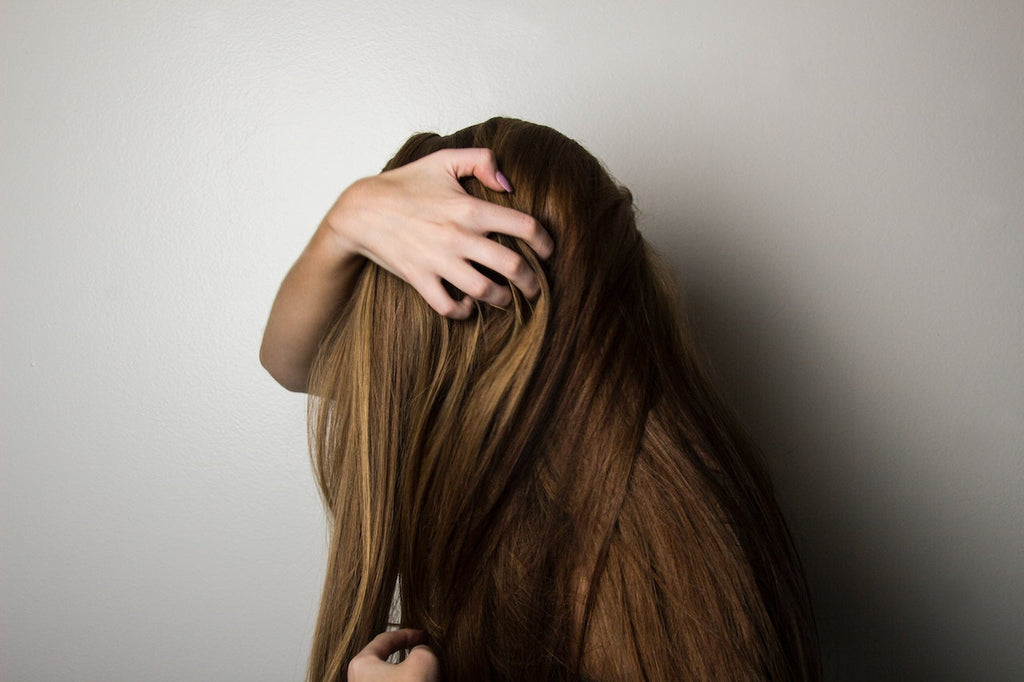
The Normalcy of Hair Shedding During Minoxidil Use
Hair shedding is a normal process that occurs daily. People lose a considerable average of strands per day as is, and this is completely normal. However, some men may experience an increase in hair shedding when using minoxidil.
Minoxidil is a medication that is used to treat hair loss. It is available in both topical forms, which means the minoxidil is applied to the scalp, increasing blood flow to the hair follicles. This increased blood flow may cause the follicles to produce new hair.
While some may find themselves surprised and anxious, it's best to note that shedding it is quite normal and must not be a cause for concern. Continue reading to learn more.
Why Shedding Occurs During Minoxidil Use
As the follicles produce new hair due to minoxidil's impact, the old hair is pushed out, causing the shedding process to occur. This process is known as the anagen (growth) phase. The anagen phase is followed by the telogen (resting) phase, during which the hair follicle rests.
In other words, as new hair begins to grow, old hair may fall out. While it can seem concerning, shedding can actually be a sign that the medication is working, creating space where more and healthier hair can come through.
How Long Shedding Occurs During Minoxidil Use
The duration of shedding can depend on how long someone uses minoxidil. A person may shed for at least a few weeks after first starting minoxidil, but it is not uncommon for shedding to last for a few months.
To be more specific, the shedding process can last for up to 8 weeks after starting minoxidil use. However, it is not uncommon for the shedding to last for up to 6 months, especially during the duration that minoxidil is being used.
What Areas Hair Shedding Affects During Minoxidil Use
Minoxidil is a topical application that is applied to the scalp. The shedding process can affect any area of the scalp where minoxidil is applied. However, shedding may also affect areas of the body where minoxidil is applied to.
The amount of hair shedding that occurs during minoxidil use can depend on a few factors, including the duration of minoxidil use and how much minoxidil is being used. At best, some people may only lose a few strands of hair during minoxidil use.
What Final Results Await Post-Minoxidil Use
The final results of minoxidil use vary from person to person. In general, minoxidil is most effective at slowing down hair loss and promoting hair growth in people who use it early on in the hair loss process.
Minoxidil is not a complete cure for hair loss for everyone, and its effects will only last as long as the medication is utilized. Once a person stops using minoxidil, while shedding may stop, the hair loss may not be addressed.
Conclusion
To conclude, hair shedding is a normal side effect of minoxidil use, and it is nothing to be concerned about. It is temporary, and it should signify that your hair growth cycle is in motion, so you can look forward to better hair growth.
Hoping for hair regrowth through minoxidil? Tugain 10 offers Minoxidil solutions for men that can be used on the scalp, beard, or eyebrows with hair loss. Fast and free shipping available on all USA and UK orders. Shop now!

4 Types of Foods That Contribute to Hair Loss & What You Can Do
Hair loss is a common problem that affects both men and women. There are many factors that can contribute to hair loss, including diet.
Certain foods can contribute to hair loss by affecting the health of the scalp or the hair follicles. In some cases, hair loss can be a sign of a more serious underlying health condition. If you are concerned about hair loss, it is important to speak to a doctor or dermatologist. They can help to identify the cause of your hair loss and recommend the best treatment options.
You can also do several things to prevent hair loss, including eating a healthy diet and avoiding certain hairstyles that can strain the hair follicles.
In this article, we will look at some foods that can cause hair loss, as well as some tips to prevent hair loss.
1. Dairy
Dairy products can be a major contributor to hair loss. They contain high levels of protein, which can damage the hair follicles and lead to hair loss.
Some of the most common dairy products that can cause hair loss include milk, cheese, and yogurt. Be careful about the types of dairy products you eat, as some are more likely to cause hair loss than others.
To avoid hair loss, limiting your intake of dairy products to only those low in protein is important. This means that you should avoid milk, cheese, and yogurt, as well as other dairy products that are high in protein.
Instead, you should try to eat milk products low in protein, such as skimmed or low-fat milk. You can also try to eat cheese in moderation, but be sure to choose cheese that is low in protein.
2. Sugar
Some people believe that sugar can cause hair loss. While no scientific evidence supports this claim, limiting your sugar intake is a good idea if you are concerned about hair loss.
Sugar is known to be bad for your health, and it can also cause your blood sugar to spike. This can lead to a condition known as insulin resistance, which has been linked to hair loss. Excessive sugar intake can also cause your hair to become dry and brittle. This can lead to hair loss.
3. Refined Carbs
Bread, cakes, pasta, and pizzas are some foods that can cause hair fall. When you eat these refined carbohydrates, they can block your defenses against stress, which can then lead to even more hair fall.
These foods contain simple carbohydrates that are quickly turned into sugar in your body. Eating too many simple carbs can lead to health problems like diabetes and obesity. Consuming too much sugar can also damage your hair and make it more likely to fall out.
4. Nuts
Nuts are a good source of protein, vitamin E, and other essential nutrients for healthy hair. However, eating too many nuts can actually cause hair loss. This is because nuts are high in fat, and eating too many of them can lead to weight gain.
Excess weight can cause hair loss by putting stress on your hair follicles. It can also lead to a condition known as telogen effluvium, a type of hair loss caused by stress.
The Bottomline
Many foods can cause hair loss, so you must be aware of them to take steps to combat them. Some of the main culprits are processed foods, foods high in sugar or salt, and foods high in fat.
However, many foods can help promote healthy hair, including fruits and vegetables, lean protein, and whole grains. By following a healthy diet and avoiding the foods that can cause hair loss, you can help keep your hair healthy and strong.
Concerned abouthair loss? Tugain 10 has a range of products that can help you support hair growth. Shop now!
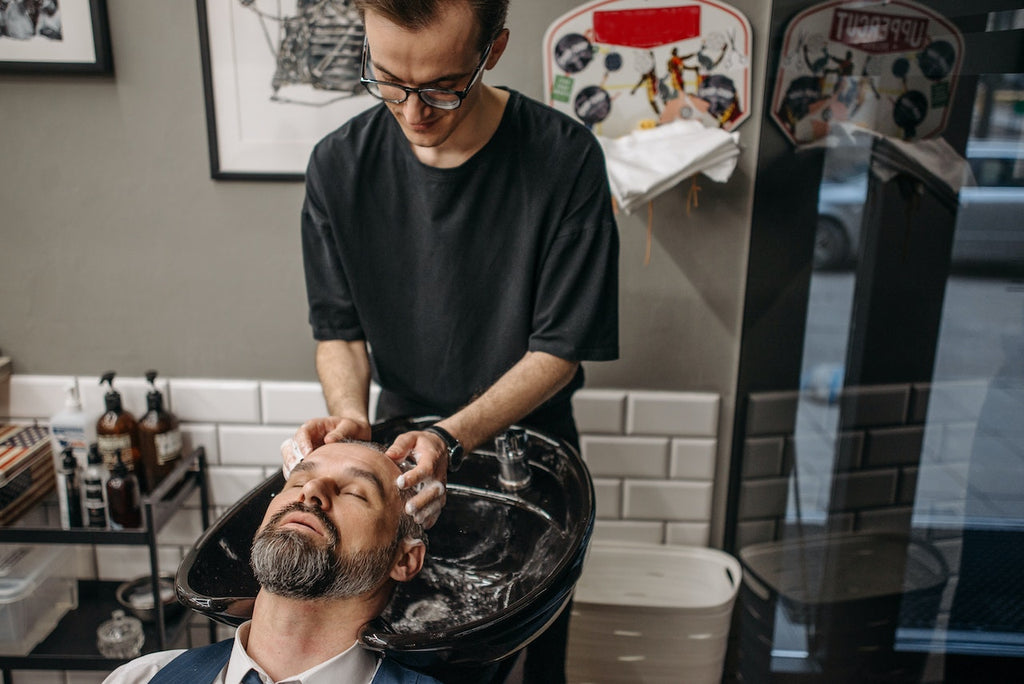
Minoxidil: Learning the Basics and How It Works for Men
Many men suffer from hair loss and feel insecure about their appearance. Many products on the market claim to help with hair growth, but not all of them are effective. However, there are some solutions that can help stimulate hair growth and improve the appearance of the scalp.
That said, Minoxidil is a form of treatment that helps to improve the lives of those who use it. This treatment helps to improve the appearance of hair, and it also helps to make the hair thicker and fuller.
First of All, What Is Minoxidil?
Minoxidil is a solution that is applied directly to the scalp in order to encourage hair growth. This solution helps hair follicles to survive for a longer period of time in their growth cycle. This treatment is for men who are experiencing hair loss and thinning. It can help stimulate the hair follicles to produce better quality hair. It is most effective when at least some hair is present and will not work if there is complete baldness.
Some Minoxidil Usage Tips for Men
To apply Minoxidil evenly, first measure out the correct amount specified by your doctor. Apply the solution to your scalp in the areas where you are experiencing hair loss. Be sure to massage it gently so that the solution will evenly distribute. After applying the solution, wash your hands with soap and water. You should apply Minoxidil to your scalp twice a day, once in the morning and once at night.
The thing is, it is for men's use only- it should not be used on any other area of the body. To see desired results, Minoxidil should be used daily and applied to the scalp diligently for a few months.
Also, remember that this treatment is a process that must be done every day to be effective. You apply the solution to your scalp in the morning, and it helps distribute the product evenly.
The Key Benefits of Minoxidil
1. It Helps to Regrow Hair
One of the key benefits of Minoxidil is that it helps to promote hair growth. When used regularly, Minoxidil can help to reverse hair loss and stimulate new hair growth.
2. It Is Safe and Effective
Minoxidil is a safe and effective treatment for hair loss. It is one of the only treatments that has been shown to be effective in reversing hair loss.
3. It Is Easy to Use
Minoxidil is easy to use and can be applied to the scalp twice a day.
4. It Is Affordable
Minoxidil is an affordable treatment for hair loss. It is available over the counter without a prescription.
Conclusion
Minoxidil is a hair loss treatment that has been shown to be effective in stimulating hair growth. It is typically used by men who are experiencing hair loss, and it has been shown to be effective in restoring hair growth.
There are a few different ways to use Minoxidil; the most common is applying it directly to the scalp. It is essential to make sure that the scalp is dry before applying Minoxidil, and it is also important to avoid getting it in the eyes.
Feel free to consult a specialist for more information on its proper application.
If you are looking for a great source of Minoxidil products, look no further than our amazing selections here at Tugain 10. We offer a wide range of hair care items that will help bring out your hair's former glory! Check out our online shop for more of our hair care selections and their prices.
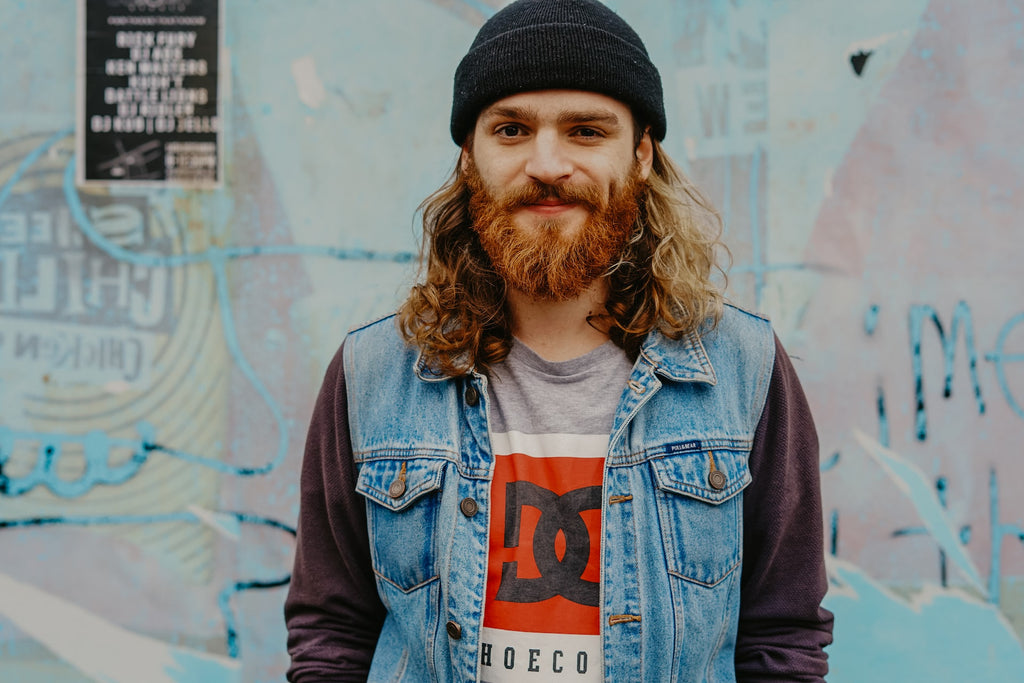
5 Best Practices in Expediting Beard Growth and Other Tips
Growing a beard can be a challenge for some men. Even if they start growing facial hair during puberty, they may experience bumps later, which can trigger their hair further growing. But how can men expedite beard growth? Here are some tips.
Can People Speed Up Beard Growth?
There is no surefire way to speed up beard growth. Some people may find that using beard oil or balm can help hydrate the skin and promote healthy hair growth. Meanwhile, taking a multivitamin that includes biotin may also help.
However, people should also consider other factors affecting hair growth. Some people may have genes that prohibit them from growing thicker hair at a certain age, while others may develop conditions that block hair growth.
1. Exercise
There are many benefits to exercising regularly, including improved circulation. Improved circulation can help to promote hair growth as increased blood flow helps to deliver nutrients and oxygen to the cells in the body, including the cells in the scalp.
Exercise can help to encourage hair growth and prevent hair loss. It also helps to reduce stress levels, which can be a significant contributing factor to hair loss. Running a few laps in the morning or heading to the gym can hit two birds with one stone.
2. Taking Supplements
Specific vitamins and minerals are essential for hair growth. In particular, zinc, biotin, and iron are necessary for healthy hair. Zinc helps the cells in the body to produce proteins, including keratin, the major protein that makes up the hair.
Biotin helps the body produce carbohydrates and fats, which are necessary for the growth and maintenance of hair. Meanwhile, Iron helps the cells in the body to make red blood cells, which are essential for delivering oxygen and nutrients to the cells in the body.
3. Getting Enough Sleep
We all know how important sleep is, but you may not know how important sleep is for hair growth. While you sleep, your body heals and regenerates cells. In short, getting enough sleep aids hair growth in men and women.
You can do a few things to ensure you get enough sleep each night. But the most effective is establishing a regular sleep schedule and sticking to it as much as possible, as it will help your body get into a rhythm and make it easier to fall asleep at night.
4. Doing Skin Care
Seborrheic dermatitis is a common skin condition that can cause inflammation, itchiness, and flaking on your scalp. The situation is often caused by an overgrowth of a type of yeast called Malassezia, which is naturally present on your skin.
That’s why you should take care of your skin and ensure it’s not dry or oily, as they can damage your hair follicles and cause hair loss. Instead, use gentle, natural skin care products that won’t damage your hair.
5. Have Healthy Diet
We are what we eat. Therefore, a diet to support hair growth should speed up getting excellent locks. Getting enough protein is essential for hair growth, so ensure you eat plenty of protein-rich foods, such as meat, fish, eggs, and beans.
Conclusion
Having a good-looking beard is essential for most men. Therefore, growing it out after a trim or shave is an immediate action they want. But there are instances when the hair does not cooperate and may take longer than usual to grow back. However, there are ways to expedite beard growth that men can follow regularly.
Tugain 10 offers the best beard growth products on the market. As we help people with hair loss, our hair regrowth Minoxidil items in topical solution drop and foam creams come available on our website. Shop now and enjoy a thick and luscious beard and our Buy 2 & Save promo on all items.
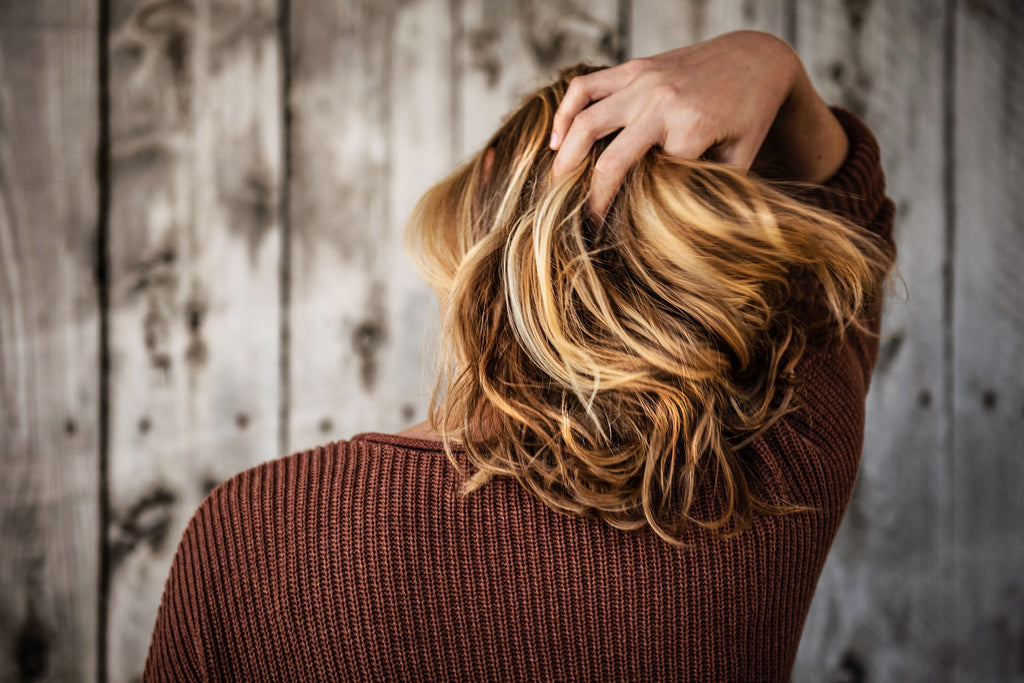
How to Apply Minoxidil Correctly for Optimal Hair Growth
Minoxidil is a medication that is commonly used to treat hair loss. It is available in both topical and oral forms. The topical form is applied to the scalp twice daily, while the oral form is taken as a pill once daily. Minoxidil is thought to work by increasing blood flow to the hair follicles and by promoting the growth of new hair.
What's in Minoxidil?
Minoxidil is a potassium channel opener, which relaxes vascular smooth muscle and causes dilation of peripheral arteries. It also stimulates hair follicle growth. Minoxidil was originally developed as an oral medication for high blood pressure. However, it was quickly observed that one of its side effects was excessive hair growth. As a result, minoxidil was reformulated as a topical solution and sold as a hair loss treatment.
Side Effects of Minoxidil
The most common side effects of minoxidil include:
- Itching
- Dryness
- Flaking
- Redness
- Dizziness
- Headache
- Numbness
- Burning
If you experience any of these side effects, you should stop using minoxidil and consult your doctor.
Minoxidil may not be suitable for everyone. You should not use minoxidil if you are pregnant or breastfeeding. You should also not use minoxidil if you have a history of heart disease, high blood pressure, or stroke.
How to Apply Minoxidil
1. Select the minoxidil product you will use. Minoxidil is available over the counter in both a 2% and 5% solution. The 5% solution is more effective, but it can also cause more side effects. You should start with the 2% solution and only move to the 5% solution if the 2% solution does not work for you.
2. Apply minoxidil to a clean, dry scalp. Wet your hair and scalp with warm water. Apply a small amount of shampoo to your hair and scalp and massage it in. Rinse your hair and scalp with warm water. Blot your hair and scalp dry with a towel.
3. Dispense the minoxidil solution into your hand. The amount of solution you use will depend on the size of your scalp. For a small scalp, use 1 mL of solution. For a medium scalp, use 2 mL of solution. For a large scalp, use 3 mL of solution.
4. Apply the minoxidil solution to your scalp. Part your hair into small sections. Apply the solution to your scalp using your fingers. Be sure to cover the entire affected area.
5. Allow the solution to dry. Do not wash your hair for at least 4 hours after applying the solution.
6. Repeat the application process twice per day. Minoxidil is most effective when used twice per day.
Conclusion
If you are looking for a way to improve your hair growth, minoxidil may be a good option for you. This medication is available in both a topical solution and a foam, and can be applied directly to the scalp. Minoxidil is thought to work by widening blood vessels and increasing blood flow to the hair follicles, which may help to promote hair growth. It is important to use this medication as directed by your doctor or dermatologist to see the best results.
If you're looking for Minoxidil products to reverse the effects of hair loss, we've got you covered! Tugain boasts a wide range of hair growth products to fit everyone's needs. Browse and shop through our products today!
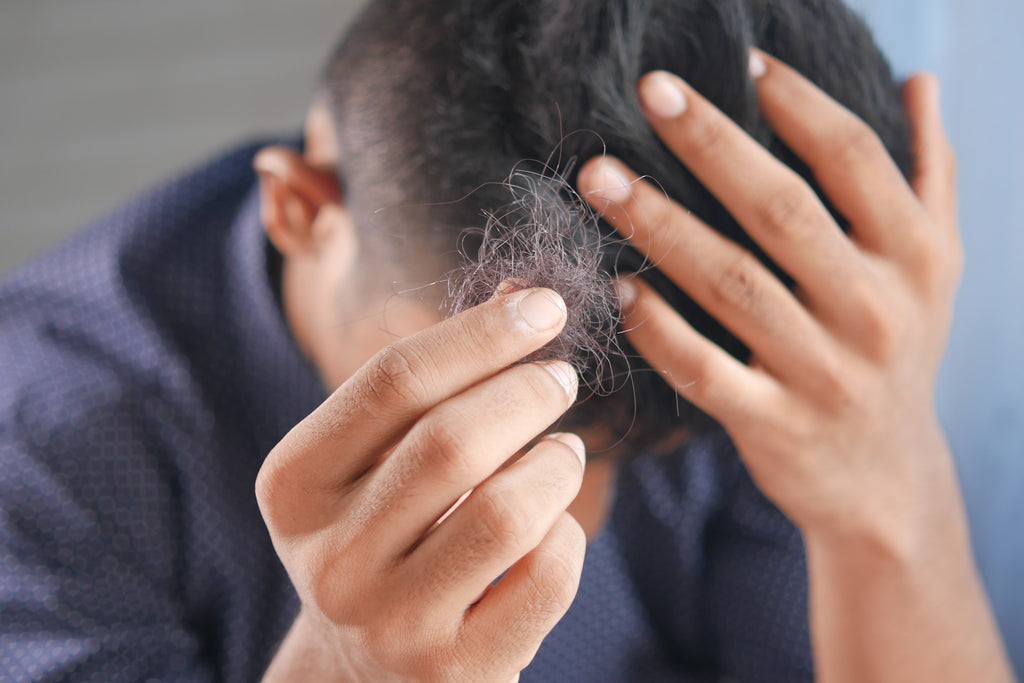
Top Reasons to Use Minoxidil after a Hair Transplant
Minoxidil is a medication that is commonly used to treat hair loss. It is available in both a topical solution and a pill form. Minoxidil is thought to work by stimulating blood flow to the hair follicles and by promoting the growth of new hair.
There is no definitive answer as to whether or not minoxidil should be used after a hair transplant procedure. Some doctors may recommend minoxidil to help stimulate hair growth, while others may not recommend its use. Ultimately, the decision of whether or not to use minoxidil after a hair transplant procedure should be made between you and your doctor.
How Does a Hair Transplant Work?
A hair transplant is a surgical procedure that is used to treat hair loss. During a hair transplant, healthy hair follicles are taken from an area of the scalp where hair is still growing and transplanted to an area of the scalp where hair is thinning or missing. Hair transplants are typically performed using one of two methods: follicular unit transplantation (FUT) or follicular unit extraction (FUE). FUT is the more traditional method of hair transplantation.
During FUT, a strip of skin containing healthy hair follicles is removed from the scalp. The strip is then divided into smaller grafts, each containing one or a few hair follicles. The grafts are then transplanted to the area of the scalp where hair is missing. FUE is a newer method of hair transplantation. During FUE, individual hair follicles are removed from the scalp one at a time. The follicles are then transplanted to the area of the scalp where hair is missing. After a hair transplant, it typically takes several months for the transplanted hair to begin growing. Once the hair begins to grow, it will continue to do so for the rest of your life.
Reasons to Use Minoxidil after a Hair Transplant Procedure
Here are common reasons a doctor may recommend using minoxidil after a hair transplant procedure:
To Accelerate Hair Growth
Minoxidil is a hair loss treatment that has been shown to accelerate hair growth. A study published in the International Journal of Trichology found that minoxidil was effective at accelerating hair growth in men with androgenetic alopecia (AGA). The study found that minoxidil increased the rate of hair growth by a significant percentage.
To Prevent Shock Loss
Shock loss is a condition in which the hair follicles are damaged by the trauma of surgery. This can cause the hair to fall out. Minoxidil can help prevent shock loss. In one study, minoxidil was used to treat shock loss in patients who had undergone hair transplant surgery. The patients who used minoxidil had significantly less hair loss than those who did not use minoxidil.
To Counteract the Effects of Dihydrotestosterone
Dihydrotestosterone (DHT) is a byproduct of testosterone. It is a hormone that causes the miniaturization of hair follicles, which leads to hair loss. DHT is the main cause of androgenic alopecia (pattern baldness). Minoxidil is a vasodilator, which means it opens up blood vessels and increases blood flow. Increased blood flow to the scalp can help to counteract the effects of DHT.
Conclusion
There is no right answer to this question as it depends on the individual and their specific situation. Some people may need to use minoxidil after a hair transplant procedure to help promote hair growth, while others may not need to use it at all. It is important to speak with your doctor or hair transplant surgeon to determine what is best for you.
If you're looking for Minoxidil products to help improve the success of your hair transplant procedure, we've got you covered! Tugain boasts a wide range of hair growth products to fit everyone's needs. Browse and shop through our products today!
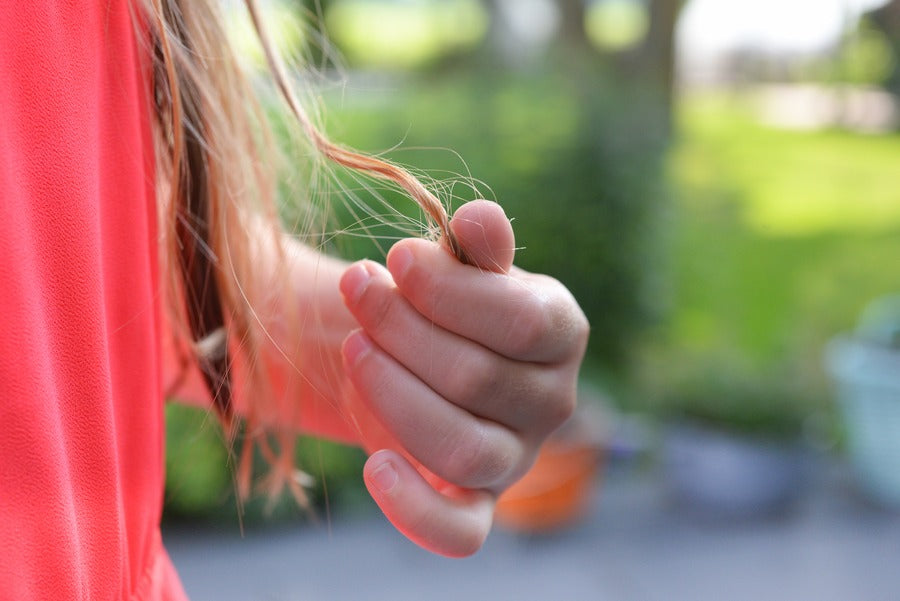
Understanding the Five Steps of Hair Loss Acceptance
There are many stages of hair loss, but one of the most important is acceptance. It's important to accept hair loss for what it is and move on. This is easier said than done as hair loss can be emotionally and psychologically taxing. To help you out, we thought it would be useful to walk you through the entire process. If this is something that you're interested in learning more about, read on for the five steps to hair loss acceptance.
Denial
The first step in hair loss acceptance is denial. This is when you first become aware of your hair loss and you try to ignore it. You may tell yourself that it's not happening or that it's just a phase. You may try to cover up your hair loss with hats, wigs, or hair extensions. You may also avoid looking in the mirror or taking pictures.
Anger
The next step is anger. This is when you start to realize that your hair loss is real and you become frustrated with yourself and with your hair loss. You may feel like you're the only one going through this and that you can't do anything to stop it. You may feel embarrassed or ashamed of your hair loss.
Bargaining
The third step is bargaining. This is when you start to make deals with yourself in an attempt to stop your hair loss. You may promise to eat better, exercise more, or stop smoking if your hair will just grow back. You may also try to find a hair loss cure or treatment.
Depression
The fourth step is depression. This is when you start to come to terms with your hair loss and the fact that it's not going to go away. You may feel like you can't do anything right and that your hair loss is just another thing that's wrong with you. You may feel like you're not attractive or desirable anymore.
Acceptance
The fifth and final step is acceptance. This is when you come to terms with your hair loss and learn to live with it. You may still feel sad or frustrated at times, but you learn to cope with your hair loss and find ways to make it work for you. You may find new ways to style your hair or new ways to cover it up. You may also find support from others who are also dealing with hair loss.
Conclusion
We hope this article has helped you gain a better understanding of the psychological and mental effects that hair loss can have on a person. Understanding the five steps of hair loss acceptance is important for those who are struggling with hair loss. The steps can help individuals to move on from the condition and to accept it. Having a good understanding of the steps can also help individuals to find ways to cope with hair loss and improve their quality of life. Feel free to refer back to this article if you need more information regarding how to deal with hair loss.
If you need help dealing with hair loss, then you’ve come to the right place. Tugain 10 can supply you with the most effective hair growth products that will help you combat hair loss. If you need more on these products, be sure to visit our website today!
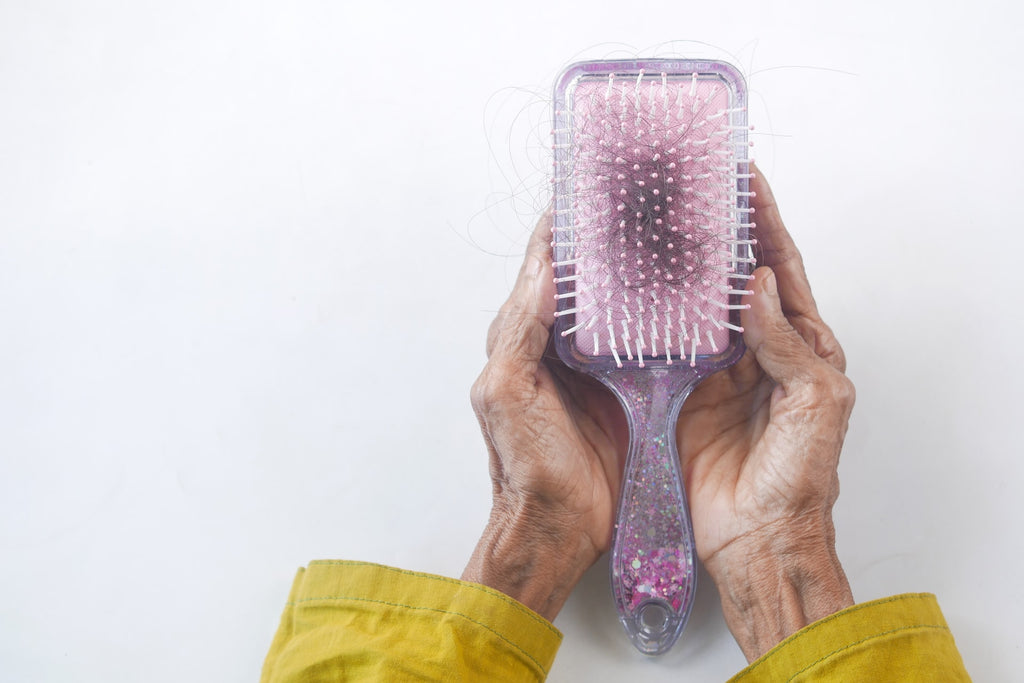
When Do Men and Women Start Losing Hair?
Hair loss is something that can happen to anyone, no matter their age. While it's most common in older adults, anyone can experience hair loss due to a number of factors. In this guide, we'll talk about the possible causes of hair loss and at what age people start to notice its effects.
The Average Age People Start Losing Hair
It's no secret that hair loss is a reality for many people, both men, and women. And while it's often something that's associated with aging, hair loss can actually happen at any age. So, what is the average age people start losing hair?
According to the American Academy of Dermatology, the average age for men to start losing hair is 35. For women, the average age is 40. However, it's important to keep in mind that these are just averages. Hair loss can occur at any age, even in childhood.
While there's no way to completely prevent hair loss, there are treatments available that can help slow the process and even promote new hair growth. If you're concerned about hair loss, don't hesitate to talk to your doctor about your options.
Factors That Contribute to Hair Loss
Hair loss is something that can happen to anyone, no matter their age. While it's most common in older adults, anyone can experience hair loss. There are many factors that can contribute to hair loss, including:
-Hormonal Changes: Hormonal changes can lead to hair loss. This can be due to changes during pregnancy, menopause, or thyroid problems.
-Medical Conditions: Hair loss can be a symptom of a variety of medical conditions, such as alopecia areata, anemia, and lupus.
-Medications: Certain medications can cause hair loss as a side effect, such as chemotherapy drugs, beta-blockers, and antidepressants.
-Stress: Stress can lead to hair loss, both temporary and permanent.
-Diet: A diet that is lacking in certain nutrients can contribute to hair loss.
- Genetics: Hair loss can be hereditary.
If you are experiencing hair loss, it's important to see a doctor to rule out any underlying medical conditions. There are also treatments available for hair loss, such as medication, surgery, and wigs/hairpieces.
The Effects of Hair Loss on Men and Women
Hair loss is perhaps one of the most common problems faced by men and women alike. It can be caused by a variety of factors, including genetics, aging, stress, and illness. While both men and women experience hair loss, it can have different effects on each gender.
For men, hair loss can be especially devastating. Not only can it make them look older, but it can also cause them to feel less confident and less attractive. In some cases, hair loss can even lead to depression.
For women, hair loss can also be very distressing. It can make them feel self-conscious and less attractive. In severe cases, it can cause them to avoid social situations altogether.
Conclusion
Hair loss is a common problem that affects people around the world. Although the causes may differ, the end result is the same - thinning hair or baldness. Fortunately, there are treatments available for both men and women suffering from hair loss. These treatments can help to restore some or all of the lost hair, and they can also help to improve self-esteem and confidence.
With the advent of new scientific research, baldness and hair loss are no longer a problem anyone should be enduring. Tugain 10 is here to bring you amazing products designed to rejuvenate your hair and scalp, preventing hair loss and its effects. Our product is the result of years of research and continuous refinement of existing hair loss treatments. Don't let hair loss control your life, and get yourself a Tugain 10 and Minoxidil solution. Shop now to order!
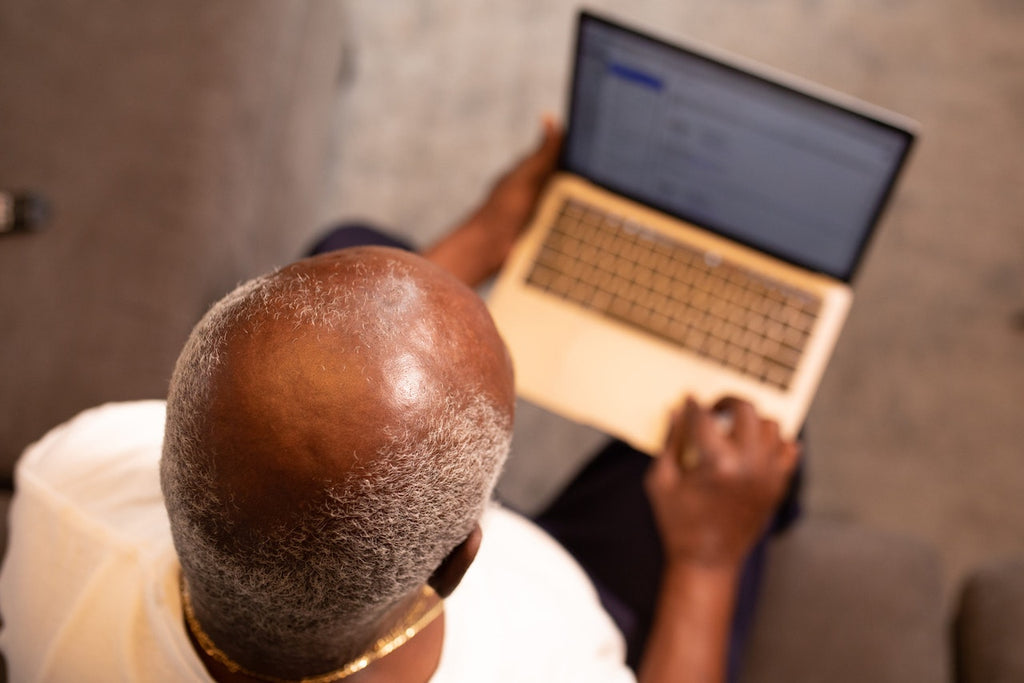
Men Hair Loss 101: Most Common Causes and Treatments
Balding. It's something that happens to most men at some point in their lives. And while it's often considered a fact of life, hair loss can be a source of great anxiety for many men.
There are a number of different causes of hair loss in men, and thankfully, there are also several different treatments available. In this article, we'll take a look at the most common causes of hair loss in men, as well as possible treatments.
Some of the more common causes of hair loss in men include:
1. Genetic Factors
The single biggest cause of hair loss in men is genetics. If your father or grandfather was bald, chances are you will be too. This type of hair loss is known as Male Pattern Baldness, and it affects around 80% of men at some point in their lives.
2. Hormonal Imbalance
Hormonal imbalances can also lead to hair loss in men. Testosterone, the male hormone, can be converted into DHT (dihydrotestosterone) in the body. DHT is a hormone that is known to shrink hair follicles, leading to thinning hair and, eventually, baldness.
3. Stress
Stress can also lead to hair loss in men. Physical or psychological stress can cause a condition known as Telogen Effluvium, in which hair follicles enter a resting phase and stop growing new hair. This type of hair loss is usually temporary, but it can last for several months.
4. Illness
Certain illnesses can also lead to hair loss. Thyroid disorders, anemia, and autoimmune diseases like lupus can all cause hair loss.
5. Medications
Certain medications can also cause hair loss. Chemotherapy drugs used to treat cancer can cause hair loss all over the body. Medications used to treat heart conditions, high blood pressure, and depression can also lead to hair loss.
6. Nutritional Deficiencies
Nutritional deficiencies can also lead to hair loss. A lack of protein, iron, or zinc in the diet can all lead to thinning hair.
7. Age
As men age, their hair follicles begin to shrink, leading to thinning hair. This type of hair loss is known as Senescent Alopecia, and it affects around 50% of men by the time they are 50 years old.
8. Environmental Factors
Exposure to certain chemicals, like those found in hair dyes and other hair care products, can damage the hair follicles and lead to hair loss. Exposure to pollutants and other toxins can also lead to hair loss.
Hair Loss Treatment Options for Men
There are several hair loss treatment options available for men, ranging from prescription medications to surgical procedures. Some of the most common hair loss treatments are described below.
1. Minoxidil
Minoxidil is a topical medication that is available over the counter. It is applied to the scalp twice a day and is most effective in treating hair loss due to Androgenetic Alopecia.
2. Finasteride
Finasteride is a prescription medication that is taken orally. It is most effective in treating hair loss due to Androgenetic Alopecia.
3. Hair Transplant
A hair transplant is a surgical procedure in which hair follicles are transplanted from one area of the scalp to another. This procedure is most effective in treating hair loss that is due to Androgenetic Alopecia.
4. Platelet-Rich Plasma Injections
Platelet-rich plasma (PRP) injections are a newer treatment for hair loss. In this procedure, a sample of the patient's blood is taken and then injected into the scalp.
5. Laser Therapy
Laser therapy is a newer treatment for hair loss that uses low-level lasers to stimulate hair growth.
Conclusion
There are many potential causes of hair loss in men, and it can be difficult to determine the exact cause without a thorough examination by a medical professional. However, some of the most common causes of hair loss in men include genetic factors, hormonal imbalances, nutritional deficiencies, and certain medical conditions. Treatments for hair loss will vary depending on the underlying cause, but may include medications, surgery, and lifestyle changes.
If you're looking for Minoxidil products to reverse the effects of hair loss, we've got you covered! Tugain boasts a wide range of beard growth products, so you don't have to wait as long for that full beard look. Shop our products today!
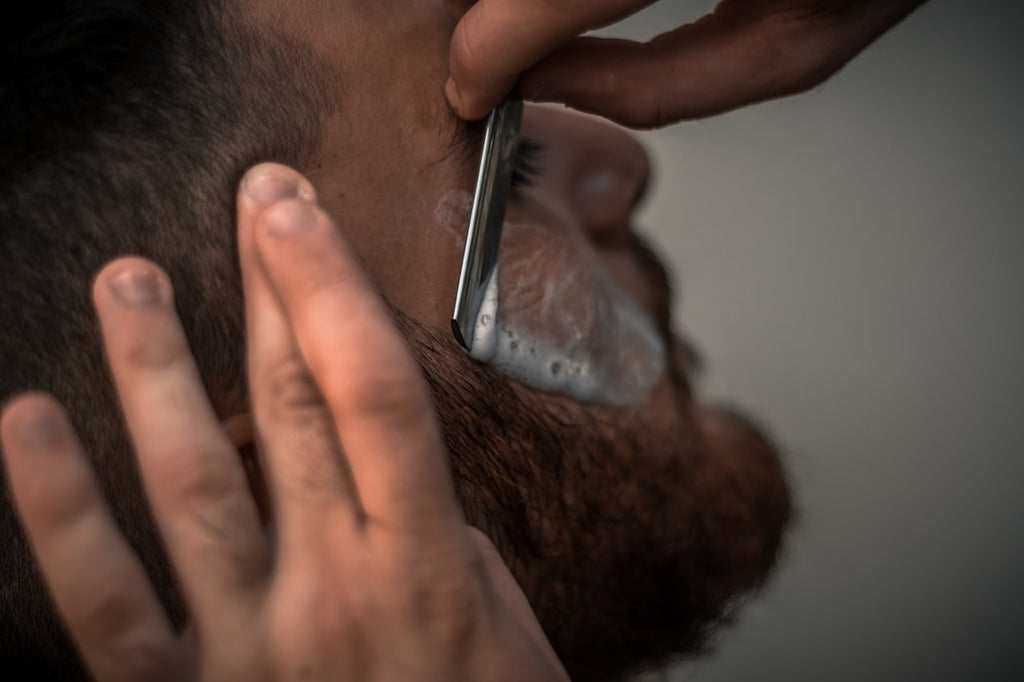
8 Maintenance Tips to Ensure Your Beard Stays in Top Shape
Beards are back in style, and there’s no better time to grow one than now. But before you let your facial hair run wild, there are a few things you should know about beard care. With a little time and effort, you can have the best-looking beard on the block. Here are eight tips on how to take care of your beard:
1. Trim Regularly
A well-groomed beard looks its best when it’s trimmed regularly. Use a good quality beard trimmer and start by trimming the sides and back of your beard. Then move on to the mustache and goatee area. Finish by trimming your neckline. So, how frequently should you shave your beard? Grab a pair of scissors or a beard trimmer every few weeks and examine your beard in the mirror. Is there any unevenness, lengthy regions, or split ends? If so, balance things out and get rid of the damaged hair - that's how to clean up a beard and look your best.
2. Clean Up Your Neckline
The neckline is the line where your beard meets your neck. It’s important to keep this area clean and well-groomed. Use a beard trimmer to create a sharp line just above the Adam’s apple. Then shave the area below the line with a razor.
3. Wash Your Beard
Just like the hair on your head, your beard needs to be washed regularly. Use a mild shampoo or soap and massage it into your beard. Rinse thoroughly and pat dry with a towel.
4. Don't Neglect the Skin Underneath
It’s important to keep the skin underneath your beard clean and healthy. Wash your face twice a day and use a mild cleanser. Exfoliate once a week to remove dead skin cells. And apply a moisturizer to keep your skin hydrated.
5. Protect It from the Elements
The sun, wind, and cold can all damage your beard. Use a beard oil or balm to protect your facial hair from the elements.
6. Eat a Healthy Diet
Eating a healthy diet is important for beard growth. Make sure to include plenty of protein, fruits, and vegetables in your diet.
7. Use Beard Oil
Beard oil is a great way to keep your beard hydrated and looking its best. Apply a few drops of oil to your beard and massage it in.
8. Make Beard Growth Faster with Topical Minoxidil Solutions
If you’re looking for a way to speed up beard growth, try using a topical minoxidil solution. Minoxidil is an FDA-approved ingredient that has been shown to promote hair growth. Apply a minoxidil solution to your beard area twice daily for the best results.
Conclusion
Beard care is important for anyone who wants to maintain a healthy and attractive beard. There are a few basic steps that should be followed: cleansing, conditioning, and trimming. Regular cleansing with a beard soap or shampoo will help to remove dirt and oil build-up, while conditioning will keep the beard soft and manageable. Trimming is also important to keep the beard looking neat and tidy. By following these simple steps, you can ensure that your beard will stay healthy and looking its best.
If you're looking for Minoxidil products to maximize your beard growth, we've got you covered! Tugain boasts a wide range of beard growth products, so you don't have to wait as long for that full beard look. Shop our products today!

